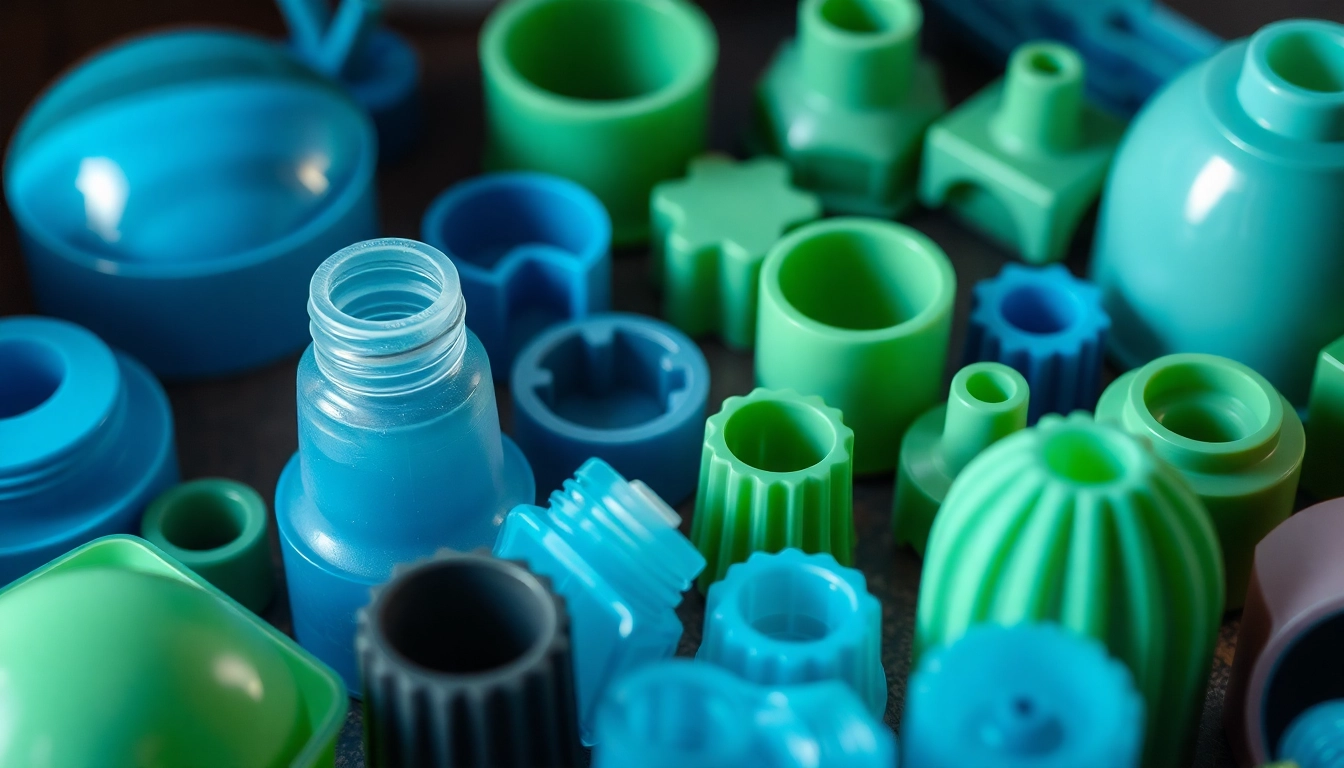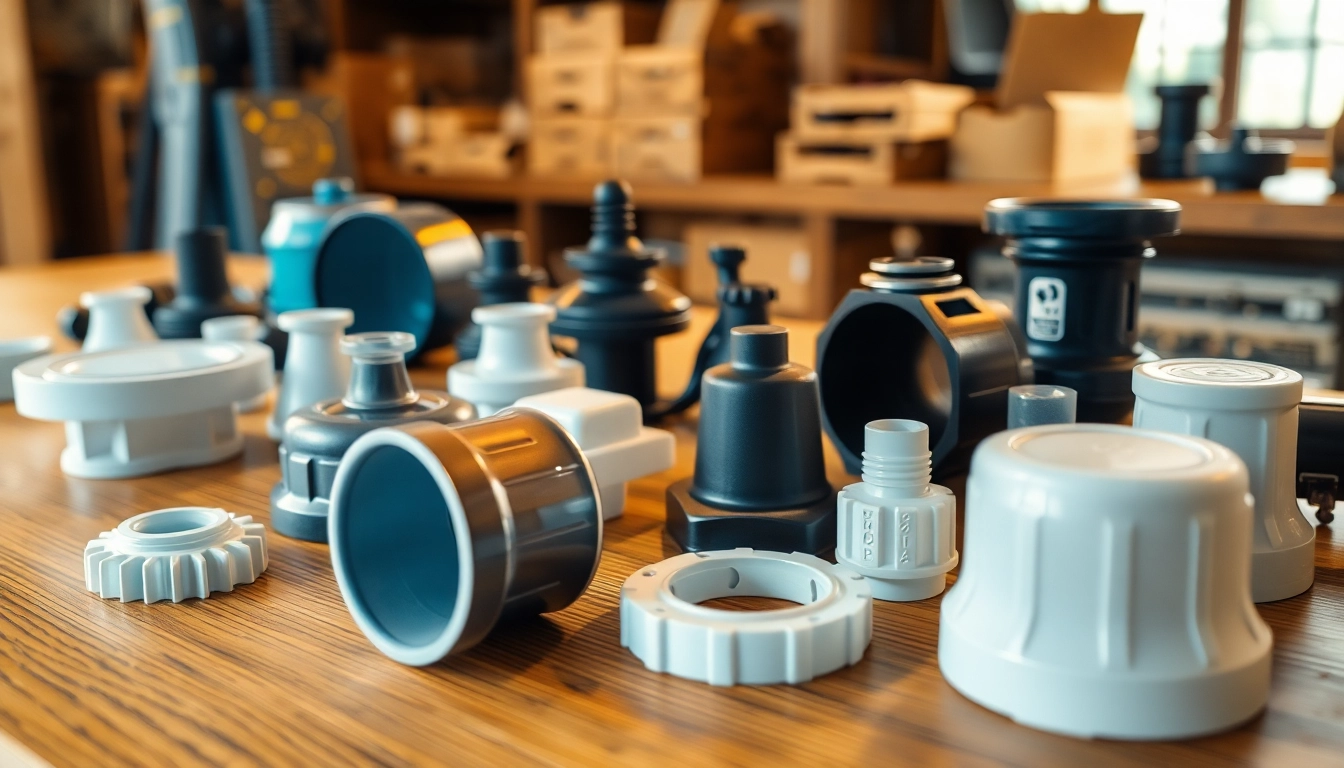Understanding Blow Moulded Plastic Parts
Blow moulded plastic parts are integral components across various industries, providing functionality and aesthetic appeal. This manufacturing process effectively produces hollow shapes, making it ideal for creating anything from containers to automotive parts. In this article, we delve deeply into blow moulded plastic parts, exploring their significance, processes, materials used, quality control measures, and future trends within the industry.
What are Blow Moulded Plastic Parts?
Blow moulded plastic parts are created through a specific manufacturing process known as blow moulding, which involves inflating a heated plastic tube (known as a parison) within a mold. This process allows the plastic to take the shape of the mold, resulting in hollow and uniform parts. The capabilities of blow moulding extend from creating simple shapes to highly complex designs, meeting diverse requirements in sectors like automotive, packaging, and consumer goods.
The Importance of Blow Moulding in Manufacturing
Blow moulding plays a critical role in modern manufacturing due to its efficiency and versatility. This method enables high production volumes at relatively low costs, making it an economical choice for manufacturers. Additionally, the blow moulding process allows for a range of plastic types and the incorporation of additives that improve strength, flexibility, and appearance. This adaptability makes blow moulded products essential for businesses seeking not only to create functional items but also visually appealing designs.
Common Applications of Blow Moulded Parts
Blow moulded parts find application in various fields, underlining their versatility. Key applications include:
- Packaging: Blow moulding is widely used in the production of bottles, containers, and jars, offering lightweight and durable packaging solutions.
- Automotive Components: This process is ideal for manufacturing fuel tanks, air ducts, and other hollow parts that contribute to vehicle performance.
- Consumer Goods: Many everyday products, such as toys and household items, are made using blow moulding, emphasizing its role in consumer markets.
- Industrial Applications: Blow moulded components are utilized in various industrial products, including tanks, pipes, and hoses, highlighting their robustness and versatility.
Types of Blow Moulding Processes
Understanding the types of blow moulding processes is essential for choosing the right method for specific applications. The main categories include extrusion blow molding, injection blow molding, and injection stretch blow molding.
Extrusion Blow Molding Explained
Extrusion blow molding is one of the most common methods where plastic is extruded into a tube (parison), which is then enclosed in a mold. Air is blown into the parison, expanding it to take the mold’s shape. This method is particularly favored for its efficiency in large-scale productions and is often used for creating bottles and large containers. Its advantages include:
- High production rates, making it ideal for mass manufacturing.
- The ability to produce large hollow parts with varying wall thicknesses.
- Cost-effective for lower volume runs due to simplified machinery and processes.
Injection Blow Molding: Benefits and Limitations
Injection blow molding combines injection molding and blow molding to create high-precision parts. The process starts with injecting the plastic into a mold to form a preform, which is then transferred to a blow mold where air is introduced. The main benefits include:
- High dimensional accuracy, making it ideal for intricate designs.
- Smooth surface finishes and consistent wall thickness for enhanced aesthetic appeal.
- Best suited for smaller, more complex parts.
However, there are limitations, including higher initial setup costs and production times compared to extrusion blow molding.
Choosing the Right Process for Your Needs
Selecting the appropriate blow moulding process is crucial for meeting production requirements. Key considerations include:
- Part Complexity: Intricate designs may benefit from injection blow molding, while simpler shapes are ideal for extrusion methods.
- Production Volume: High-volume projects may be more cost-effective with extrusion blow molding.
- Material Type: The compatible materials for different blow moulding processes can influence production decisions.
Materials Used in Blow Moulding
The choice of materials is vital for developing high-quality blow moulded plastic parts. Different plastics yield different physical properties, influencing the final product’s performance.
Popular Plastics for Blow Moulding
Various polymers can be used in blow moulding, each offering unique benefits:
- Polyethylene (PE): Available in high-density (HDPE) and low-density (LDPE) forms, PE is strong, flexible, and widely used in packaging and containers.
- Polypropylene (PP): Exhibits excellent chemical resistance, making it suitable for automotive and industrial applications.
- Polyethylene Terephthalate (PET): Known for its clarity and strength, it’s often utilized in food and beverage packaging.
- Polyvinyl Chloride (PVC): A versatile material mainly used for outdoor applications due to its durability and resistance to environmental factors.
Material Properties Affecting Performance
Different materials impart various properties to blow moulded parts, affecting their performance and suitability for specific applications. Key characteristics to consider include:
- Tensile Strength: Determines the part’s ability to resist deformation under stress.
- Impact Resistance: Essential for products subjected to physical shock.
- Thermal Stability: Important for parts exposed to heat, influencing material choices for applications like automotive.
Advancements in Blow Moulding Materials
The continuous evolution of materials for blow moulding has introduced innovations such as bioplastics and composites that enhance sustainability and functionality. These advancements allow for the production of eco-friendlier options while ensuring high performance in demanding applications. Manufacturers are increasingly investing in research for new materials to expand the capabilities of blow moulding.
Quality Control in Blow Moulding
Quality control is imperative in ensuring that blow moulded parts meet the required specifications and standards. A systematic approach to quality assurance can prevent costly defects and ensure reliability.
Ensuring Consistency in Production
Consistency in the blow moulding process is essential for producing high-quality parts. Several factors can impact consistency, including:
- Temperature Control: Maintaining optimal temperatures during heating and cooling phases can prevent material distortions.
- Process Timing: Adhering to precise timing during each phase of the blow moulding process is crucial for achieving uniformity.
- Equipment Calibration: Regular maintenance and calibration of machinery help to minimize variability in production.
Testing Methods for Blow Moulded Products
Various testing methods are employed to evaluate the quality of blow moulded products. These can include:
- Visual Inspection: Checking for surface defects, discoloration, or other apparent issues.
- Dimensional Testing: Using tools like calipers to ensure proper dimensions and tolerances.
- Destructive Testing: Conducting tests that may impair the part’s integrity to measure strength and resistance levels.
Addressing Common Manufacturing Challenges
Addressing challenges in blow moulding production is vital for achieving quality control:
- Material Flaws: Conducting thorough quality checks for raw materials before production can prevent issues.
- Equipment Malfunctions: Regular maintenance schedules can help avoid breakdowns that could disrupt production.
- Operator Training: Ensuring that staff are well-trained in the blow moulding process enhances overall efficiency and reduces errors.
Future Trends in Blow Moulding
The blow moulding industry is on the brink of several trends shaped by advancements in technology and a growing emphasis on sustainability. Observing these trends can provide insight into the future landscape of blow moulded plastic parts.
Sustainability in Blow Moulded Plastic Parts
With increasing concern over plastic waste, manufacturers are focusing on sustainable practices in the production of blow moulded parts. The adoption of recyclable materials, biodegradable plastics, and circular economy practices are becoming standard in the industry. Companies are also actively pursuing certifications to demonstrate environmental responsibility to consumers.
Technological Innovations in Blow Moulding
Technological innovations, such as automation and advanced robotics, are enhancing efficiency and precision in blow moulding processes. Smart manufacturing practices are being implemented to optimize production lines, improve data analytics, and integrate real-time monitoring systems for quality assurance.
Market Predictions and Industry Growth
The blow moulding industry is expected to experience significant growth due to rising demand across various sectors, including consumer goods, automotive, and sustainable packaging. Market researchers predict an increase in investment towards developing advanced manufacturing capabilities and maintaining competitive advantages in the global market.

